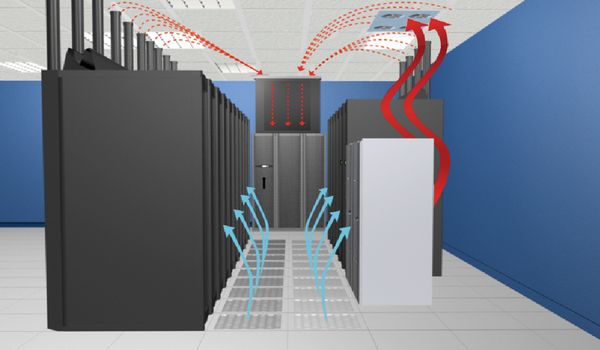Efficient cooling is a critical aspect of maintaining server rooms. Without proper temperature regulation, servers can overheat, leading to performance degradation, hardware failures, and increased downtime. As businesses continue to expand their IT infrastructure, implementing effective cooling solutions becomes even more essential. This article explores various server room cooling strategies, their benefits, and best practices to ensure optimal server performance.
Importance of Server Room Cooling
Servers generate significant heat, and without an adequate cooling system, their efficiency and lifespan are compromised. Overheating can lead to system crashes, data loss, and even irreparable damage to hardware components. Additionally, an optimized cooling system contributes to energy efficiency and cost savings. Here are key reasons why proper cooling is indispensable:
A. Prevention of Hardware Damage – Excessive heat can damage critical components such as CPUs, GPUs, and RAM, reducing their performance and longevity. B. Enhanced Energy Efficiency – A well-regulated cooling system minimizes energy consumption, reducing overall operational costs. C. Improved System Reliability – Maintaining a stable temperature ensures servers operate efficiently without unexpected shutdowns. D. Reduction in Maintenance Costs – Controlled cooling reduces the frequency of hardware replacements and repairs. E. Regulatory Compliance – Many industries have regulations concerning temperature control in data centers to prevent failures and data breaches.
Types of Server Room Cooling Solutions
1. Air Conditioning Systems
Air conditioning units are the most common cooling solution for server rooms. They regulate temperature by removing heat from the room and circulating cooled air. The two primary types include:
A. Precision Air Conditioners (PAC) – Specifically designed for data centers, these systems provide precise temperature and humidity control, ensuring optimal conditions. B. Comfort Air Conditioners – Traditional AC units used in office spaces; however, they are not ideal for server rooms due to inconsistent cooling.
2. Raised Floor Cooling Systems
Raised flooring is an effective way to manage airflow and distribute cool air efficiently within a server room. This system works by allowing cold air to pass underneath the floor and rise through perforated tiles.
A. Hot Aisle/Cold Aisle Configuration – Organizing server racks to separate hot and cold air reduces heat buildup. B. Underfloor Air Distribution – Fans push cool air through ducts under the floor to distribute it evenly.
3. Liquid Cooling Solutions
Liquid cooling is a high-efficiency method that uses a coolant to dissipate heat directly from the servers. This method is especially useful for high-density server environments.
A. Direct-to-Chip Cooling – Coolant is directly applied to the processor, effectively removing heat at the source. B. Immersion Cooling – Servers are submerged in a non-conductive liquid that absorbs and dissipates heat efficiently. C. Liquid-to-Air Heat Exchangers – These systems use liquid-cooled racks combined with traditional air-cooling methods for better efficiency.
4. Ventilation and Airflow Management
Proper ventilation is crucial in preventing heat buildup and ensuring an even distribution of cooled air. Effective airflow management techniques include:
A. Using Blanking Panels – Installed on unused rack spaces to prevent hot air recirculation. B. Cable Management Optimization – Keeping cables organized minimizes airflow blockages. C. Strategic Fan Placement – Placing exhaust fans in hot aisles and intake fans in cold aisles enhances cooling efficiency.
5. Smart Climate Control Systems
Modern server rooms employ intelligent climate control solutions that use sensors and automated systems to regulate temperature and humidity levels.
A. Temperature Sensors – These sensors monitor room temperature and adjust cooling accordingly. B. Humidity Controllers – Prevent excessive moisture, which can cause condensation and damage hardware. C. Automated Cooling Systems – AI-powered systems analyze environmental conditions and optimize cooling strategies in real-time.
6. Energy-Efficient Cooling Methods
Reducing energy consumption while maintaining optimal cooling is a priority for businesses. Several energy-efficient methods include:
A. Free Cooling – Uses outside air when ambient temperatures are low, reducing reliance on air conditioning. B. Evaporative Cooling – Water evaporation helps cool the air, offering an eco-friendly cooling alternative. C. Heat Recovery Systems – Captures excess heat and repurposes it for other uses, such as heating office spaces.
Best Practices for Server Room Cooling
To maximize the effectiveness of cooling solutions, businesses should follow these best practices:

A. Regular Maintenance and Inspection – Routine checks ensure cooling systems function efficiently and prevent unexpected failures. B. Proper Rack Arrangement – Organizing racks strategically helps maintain airflow and prevent hotspots. C. Monitoring Temperature and Humidity – Installing real-time monitoring devices alerts administrators of potential overheating issues. D. Using Energy-Efficient Equipment – Selecting energy-efficient cooling units reduces operational costs and environmental impact. E. Implementing Redundant Cooling Systems – Having backup cooling solutions in place prevents downtime in case of primary system failure.














